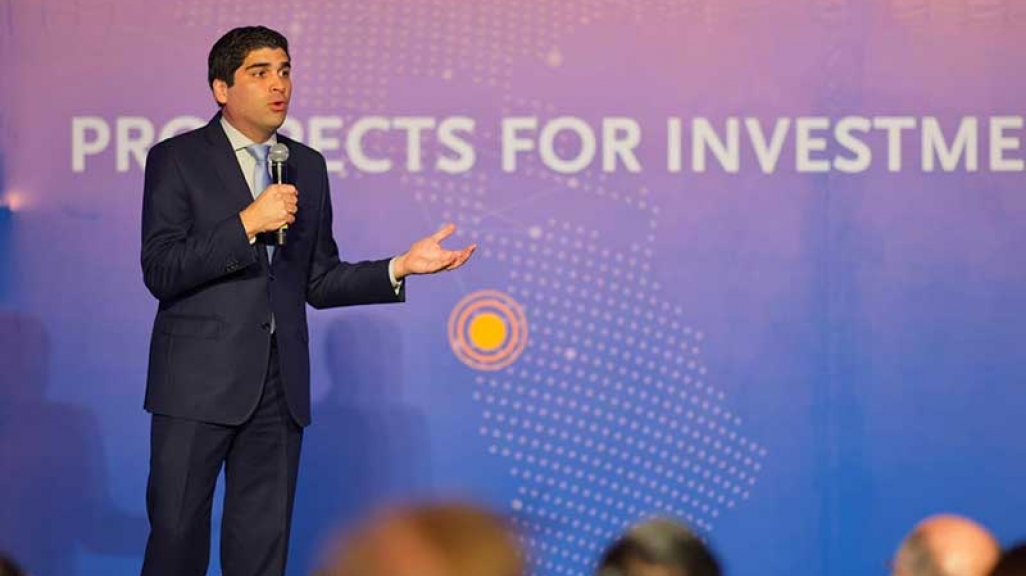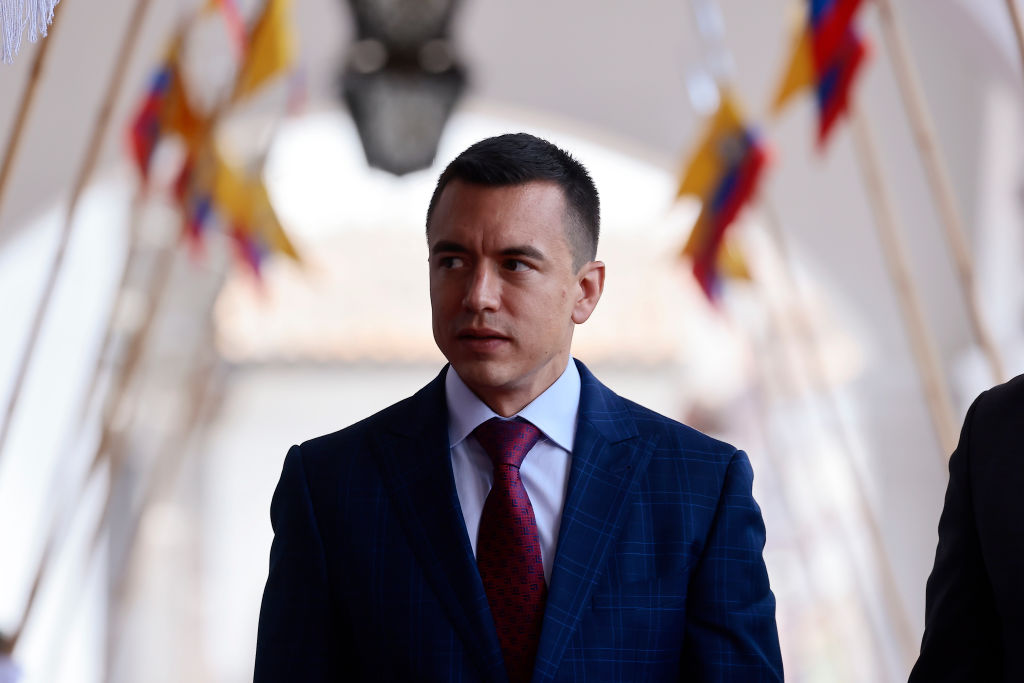#EcuadorCOA Recap: Prospects for Investment and Growth
#EcuadorCOA Recap: Prospects for Investment and Growth
“Today the world sees Ecuador with new eyes,” said Vice President Otto Sonnenholzner in AS/COA’s conference in Guayaquil.
For a complete list of speakers, see the #EcuadorCOA event page.
Lea una versión del resumen en español.
“Ecuador is beginning a transformative era, initiated by President Lenín Moreno two years ago,” said AS/COA President and CEO Susan Segal as she kicked off AS/COA’s 2019 Latin American Cities Conferences: Guayaquil, focused on the Andean country’s prospects for investment, growth, and development. Distinguishing Guayaquil’s success as a hub for tourism and commerce—“an example for the region”—Segal introduced the city’s mayor, Jaime Nebot. He highlighted the government’s fundamental change of course on economic policy, plus its efforts to combat corruption and attract investment. The final goal, he said, should be to reduce the presence of the state, managing the public debt with discrepancy, and distinguishing good investors from the bad ones. “We can’t treat those who defraud us the same way we treat those who lend us money legally,” he said.
“ #Ecuador has everything to prosper” says Mayor of #Guayaquil @jaimenebotsaadi in his speech at #EcuadorCOA “ It is moment to leave ideology behind and to think only in the prosperity of our citizens “ “It is key to work together” pic.twitter.com/RPmffFVTFF
— Nathalie Cely Suárez (@NathalieCely) May 9, 2019
The next speaker was Pablo Campana, minister of production, foreign trade, investment and fisheries. Campana highlighted the importance of the private sector for developing the country's economy, creating jobs, and attracting investment. He noted that a day earlier, Ecuador signed 43 new investment contracts worth a total $740 million, running across nine different sectors of the economy. The minister also discussed the country’s progress on joining the Pacific Alliance trade bloc and strengthening ties with its biggest commercial partner, the United States.
"This is our country. A country that is open to the world, that opened its economy." Campana added that Ecuador will continue work to increase the competitiveness of the country's productive sectors, establishing international—rather than protectionist—standards. He mentioned the need to reform Ecuador's labor laws and create new models for employment, saying that current laws are not benefiting employers or employees.
Decisiones firmes y objetivos claros. Hoy @CampanaPablo hizo anuncios importantes en #EcuadorCOA
Nuestro país debe ver al mundo como su mercado, es hora de abrirnos más al mundo, diversificar nuestra oferta exportable, generar más empleo y mayor crecimiento económico. https://t.co/3lIHdHSIUs
— Carlos Zaldumbide (@czaldumbide) May 9, 2019
During the first panel of the day, moderated by Patricio Alarcón of Comité Empresarial Ecuatoriano, speakers discussed ways to bring more investment to and boost productivity in Ecuador. CAF’s Bernardo Requena highlighted the importance of boosting productivity with a national plan aimed to strengthen institutions and, as a result, increase competitiveness. Bexi Jimenez of the Multilateral Investment Guarantee Agency commented on the importance of establishing macroeconomic stability to attract private investment, adding that the emphasis should be on quality over quantity. “Macroeconomic stability is crucial because it creates an environment where the private sector can be prosperous,” Jimenez said. "And a prosperous private sector generates employment and pays taxes.”
Citibank’s Julio Laso stressed the need to minimize Ecuador’s country risk and improve Ecuador’s international profile so that companies can acquire international financing. Mexichem’s Carlos Alaña Pine expressed enthusiasm over Ecuador’s entrance into the Comprehensive and Progressive Agreeent for Trans-Pacific Partnership, which would increase Ecuadoran companies’ access to other markets.
“El turismo es el factor de desarrollo económico más potente que puede tener un país dotado de una extensa e inigualable riqueza natural, gastronómica y cultural” @PradoHolguin #EcuadorCOA pic.twitter.com/lyvO9w2cx5
— Turismo Ecuador (@TurismoEc) May 9, 2019
Tourism is the most potent economic development factor that a country like Ecuador can have, said Tourism Minister Rosi Prado de Holguín, who described it as directly tied to meeting the UN Sustainable Development Goals. (Download her presentation.) She also highlighted how Ecuador is the third-safest country in South America to visit after Argentina and Uruguay.
In his presentation, the Vice Minister of Transportation Ángel Loja outlined the country’s various construction projects underway to improve efficiency and environmental sustainability. He pointed to Quito’s Metroférico, a new bridge in southern Guayaquil, and the Bombolí tunnel—set to be Ecuador’s longest. “We hope that these projects wake up the interest of private investors,” said Loja. (Download his presentation.)
Next up, FERRERE’s Javier Robalino moderated a discussion on the future of Ecuadoran mining with the vice minister for that sector, Fernando Benelcazar, and SolGold Ecuador’s Andrew Taunton. Benelcazar described mining as the economic pillar for Ecuador’s future over the course of the next decade as it’s the primary draw of foreign investment. This year, Ecuador is set to double its mining exports with the start of production in two new large-scale mining projects: the Mirador copper project and the Fruta del Norte gold project.
Viceministro @FLBen_VM anuncia que en los próximos días se dará a conocer la política minera del Ecuador (revisada), que hará de esta industria el principal pilar de la economía nacional en los próximos cinco años #EcuadorCOA pic.twitter.com/lcY5nL86h0
— Carlos Llanos Vera (@CarlosLLV) May 9, 2019
He also stressed that his country’s new mining policy is based on two key aspects: sustainability as the basis for competitiveness along with regulation to prevent illegal mining. Taunton echoed this sentiment, saying that private firms assume the risks associated with production and thereby need to act with transparency and respect for local communities. At the closing of the session, Benelcazar told the audience to keep an eye out in the coming 48 hours for news of one of Ecuador’s biggest copper discoveries yet by a private company.
Closing out the day, Vice President Otto Sonnenholzner said that the world is seeing Ecuador through a new lens, thanks to the fact that the country has not only achieved macroeconomic stability, but also because the government respects rule of law and institutions.
¡El mundo ve al Ecuador como un país de oportunidades! Hemos logrado estabilidad económica y seguridad jurídica para fomentar la inversión nacional y extranjera. Caminamos juntos por la misma ruta hacia un destino de respeto, equidad, justicia y prosperidad. #EcuadorCOA pic.twitter.com/U7e4rVGhp9
— Otto Sonnenholzner (@ottosonnenh) May 9, 2019







